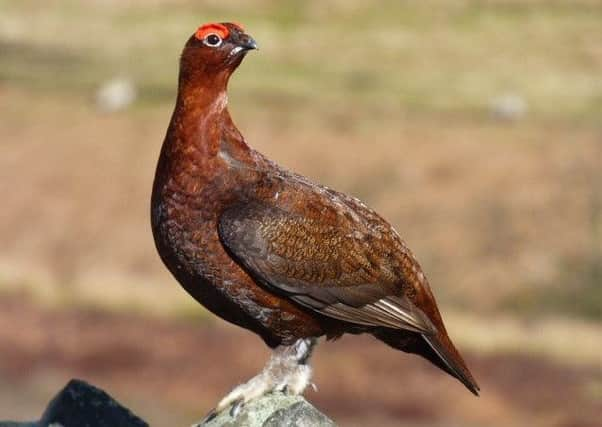Country & Coast: Lack of reverence for our only entirely native bird


It was after a severe January snowstorm back in the 1880s when, according Thomas Hudson Nelson’s The Birds of Yorkshire (1907) “large packs of birds came down into the lowlands.” Others were seen around the villages of Arthington and Weeton in Lower Wharfedale.
As many as 500 of them were counted in one day, and a decade later similar hard weather forced them to scratch for food in fields around Harrogate.
Advertisement
Hide AdAdvertisement
Hide AdBack then red grouse were far more widespread than they are today and not just found in the uplands. For instance, lowland heaths near Market Weighton once hosted fair-sized populations, but the heather has long since vanished under the plough and in Yorkshire red grouse are now confined to the higher grounds of the North York Moors, Yorkshire Dales, Peak District and South Pennines.
They support a profitable industry that employs more than 2,500 people in the UK, with sportsmen paying £150 to shoot a brace of birds which will later be sold to game dealers for just a couple of pounds each.
I doubt, however, that the guns who assemble on Saturday to start the shooting season on commercial grouse moors will refer to the birds by their old Yorkshire name of moorfowl, especially since many come from abroad. And as the birds are driven towards them by beaters and go whirring overhead few, if any, will appreciate their beautiful rich reddish-brown plumage, which camouflages them so well in heather, and the male’s bright scarlet combs above the eyes.
These days even birdwatchers don’t consider it an event when they see red grouse. That’s a pity because the bird has a status that no other can match in the UK. It is our only entirely native bird, found nowhere else but the British uplands, although there is some argument as to whether it is actually a subspecies of the willow ptarmigan Lagopus lagopus, which is more widespread in the northern hemisphere, or a unique dark-winged species Lagopus scotia.
Advertisement
Hide AdAdvertisement
Hide AdWhat is clear, though, is a long-term decline in red grouse numbers. According to the British Trust for Ornithology this is due to the loss of moorland to forestry or grazing as well as other factors like disease and predation by crows and foxes. However, the Game & Wildlife Conservation Trust believes numbers have stabilised thanks to new medicated grit successfully tackling viruses and intestinal worms. Not surprisingly, most red grouse are seen on or near moorland where the grit is provided.
But small pockets are still found away from commercial estates. A month ago above Calderdale - with not a shooting butt for miles - I put up half a dozen red grouse from the heather, including a female so protective of its young that it chased me in a surprisingly intimidating and fearless manner until I was well away from its brood.